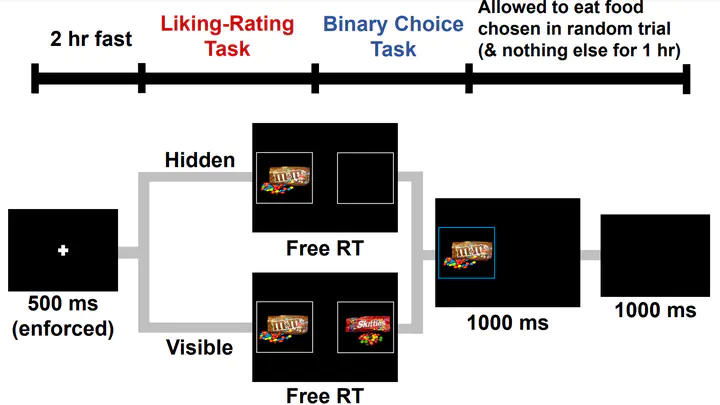Peripheral Visual Information Halves Attentional Choice Biases

Abstract
A growing body of research has shown that simple choices involve the construction and comparison of values at the time of decision. These processes are modulated by attention in a way that leaves decision makers susceptible to attentional biases. Here we study the role of peripheral visual information on the choice process and on attentional choice biases. We use an eye-tracking experiment where subjects make binary choices between food items that are displayed in marked screen “shelves” in two conditions: (1) where both items are displayed, and (2) where items are only displayed when subjects fixate within their shelves. We find that removing the nonfixated option approximately doubles the size of the attentional biases. The results show that peripheral visual information is crucial in facilitating good decisions, and suggest that individuals might be influenceable by settings in which only one item is shown at a time, such as e-commerce.